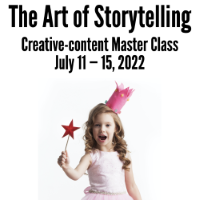Researchers find a 1:1 correlation between vivid descriptions and comprehension
Three professors from Texas A&M University and the University of the Andes aimed to find out whether concrete images or abstract images were more understandable.

First, the professors (Sadoski, Goetz and Rodriguez, 2000) crafted a series of passages. Each passage was 56 words long and written at about the same level of readability.
Half of the passages were abstract:
Character cannot be summoned in a crisis if it has been squandered by years of compromise and excuses. The only testing ground for the heroic is the mundane. There is only one preparation for that great decision that can change a life. It is those hundreds of half conscious, self-defining, seemingly insignificant decisions made in private.
The other half were concrete:
Think twice before buying another “convenience.” Grandmother’s kitchen had a pan, spoon and a knife. It produced a Sunday dinner of roast chicken, potatoes, salad, vegetables and apple pie. The kitchen of the 1990s contains a food processor, blender, laser-cut knife system and a 20-piece cookware set that produces a Sunday dinner of microwave pizza.
Then the researchers asked 40 graduate students to read the passages and rate them for how interesting and easy to understand they were.
The students rated the concrete copy more interesting and understandable.
In fact, there was almost a one-to-one correlation between how concrete a passage was and how easy it was to understand, the researchers said.
How can you make your message easier to understand by making it more concrete?
Get 3 more ways to sell concrete, creative copy. >>>
How can you make tedious topics interesting?
Fun facts and juicy details might seem like the Cheez Doodles and Cronuts of communication: tempting, for sure, but a little childish and not particularly good for you. 
Not so. Concrete details are more like salad dressing and aioli — the secret sauces it takes to get the nutritious stuff down.
Now you can learn to use concrete details to change people's minds — and behavior — at Master the Art of Storytelling, our business-storytelling workshop starting July 11.
There, you’ll learn six quick ways to add color to your message and how to help readers understand big ideas through specific details.
Save up to $100 with our group discounts.
